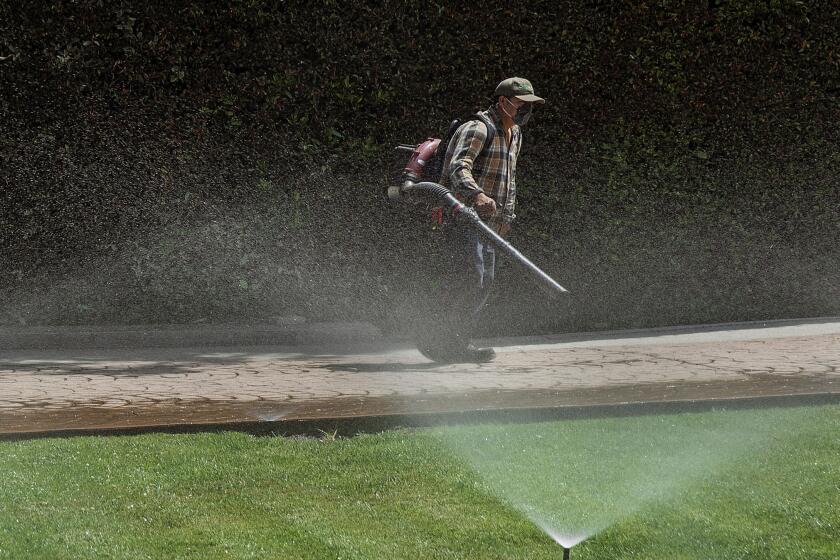5 secrets to growing big, fat, juicy tomatoes
- Share via
Scott Daigre knows tomatoes. For 18 years he’s produced Tomatomania!, a traveling springtime smorgasbord of more than 300 heirloom and hybrid tomato varieties. (Next stop: Descanso Gardens, April 6 through 8.) We asked Scott to answer the questions he gets asked most frequently. You can see more of his tips at Tomatomania.com or in his book, called, duh, “Tomatomania!”
I live on the coast (or in a canyon or anyplace with limited sun)… How can I grow tomatoes?
Be strategic. Find the warmest, sunniest section of your property (aim for eight hours of sun) and choose the right tomato—a variety with fruit smaller than a baseball that ripens in less than 72 days. Try growing in containers near south or west-facing walls for maximum heat retention. Bonus: containers can be moved to follow the sun.
Can you grow good tomatoes in a container?
Absolutely! Choose a large pot, 15 to 20 gallons, or at least 15 inches deep and 15 inches wide. Our favorite containers — wood, cloth or paper-pulp pots — don’t heat up. They’re sturdy, reusable and excellent at keeping roots cool. If you must use plastic, try wrapping them in canvas or towels to insulate against the heat, and keep them off hot surfaces like concrete.
Any tips for planting in a container?
Use a premium potting soil mixed with a nutrient-rich organic amendment like worm castings or compost, (two-thirds potting soil to one-third amendment) and just one tomato per container, so the plant has plenty of room to grow. With a 6-inch-tall plant, remove the lower leaves and bury about 2-3 inches of the stem. That’s not necessary with a gallon-sized plant which is already well established. It’s OK to add a few marigolds, basil or other shallow-rooted herbs, but stay away from deep-rooted plants that will compete for space and nutrients. Remember, container plants must be watered and fertilized more frequently than those in the ground, because pots dry out quicker and the nutrients wash away.
What about fertilizing?
After planting, fertilize potted tomatoes every 10 to 14 days. (Tip: Keep your fertilizer bag next to your tomatoes so you remember.) Fertilize in-ground plants when they flower and then every 5 to 6 weeks. We encourage the use of organic, balanced fertilizers, with numbers like 3-5-4 (nitrogen-phosphorus-potassium.) Phosphorus is good for blooms, so we don’t mind a higher phosphorus number. If you don’t get flowers, you won’t get fruit.
How much should I water?
With watering, the rule is “deep and infrequent,” with the caveat that during the hottest parts of summer, most pots must be watered daily. For plants in the ground, you want to soak the root ball, which is why you water deeply, and wait three to four days to water again. Inspect your plants and soil daily; if the ground is dark, it’s probably still moist. A word to the wise: once tomato plants start setting fruit, they don’t look as lush, so resist that first tendency to grab your hose. Too much water and the fruit will taste watery.
For an easy way to follow the L.A. scene, bookmark L.A. at Home and join us on our Facebook page for home and garden design, Instagram, Twitter and Pinterest.
ALSO:
It’s spring: Dozens of gorgeous SoCal landscapes are on display
This family is creating a zero-waste homestead in Altadena with goats, chickens and bees
Photos: Ready to scratch the grass? Here are 27 inspiring lawn-free yards







